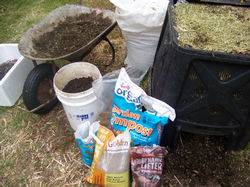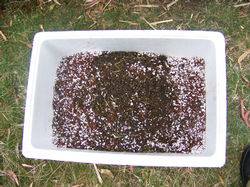Cheers boys!
Feel free to ask questions and post up pics of any organics in action or recommend a product.
With regards to the lemon juice and citric acid as ph down: I was mixing up a batch of liquid feed last night and realised the calcium phospate and my fermented plant extract of pineapple are both acidic.
I guess the cal phos with vinegar would be bit stronger.
It is good to know the ph levels of different ingredients.
Feel free to ask questions and post up pics of any organics in action or recommend a product.
With regards to the lemon juice and citric acid as ph down: I was mixing up a batch of liquid feed last night and realised the calcium phospate and my fermented plant extract of pineapple are both acidic.
I guess the cal phos with vinegar would be bit stronger.
It is good to know the ph levels of different ingredients.














